Demna Gvasalia: the activist at Balenciaga
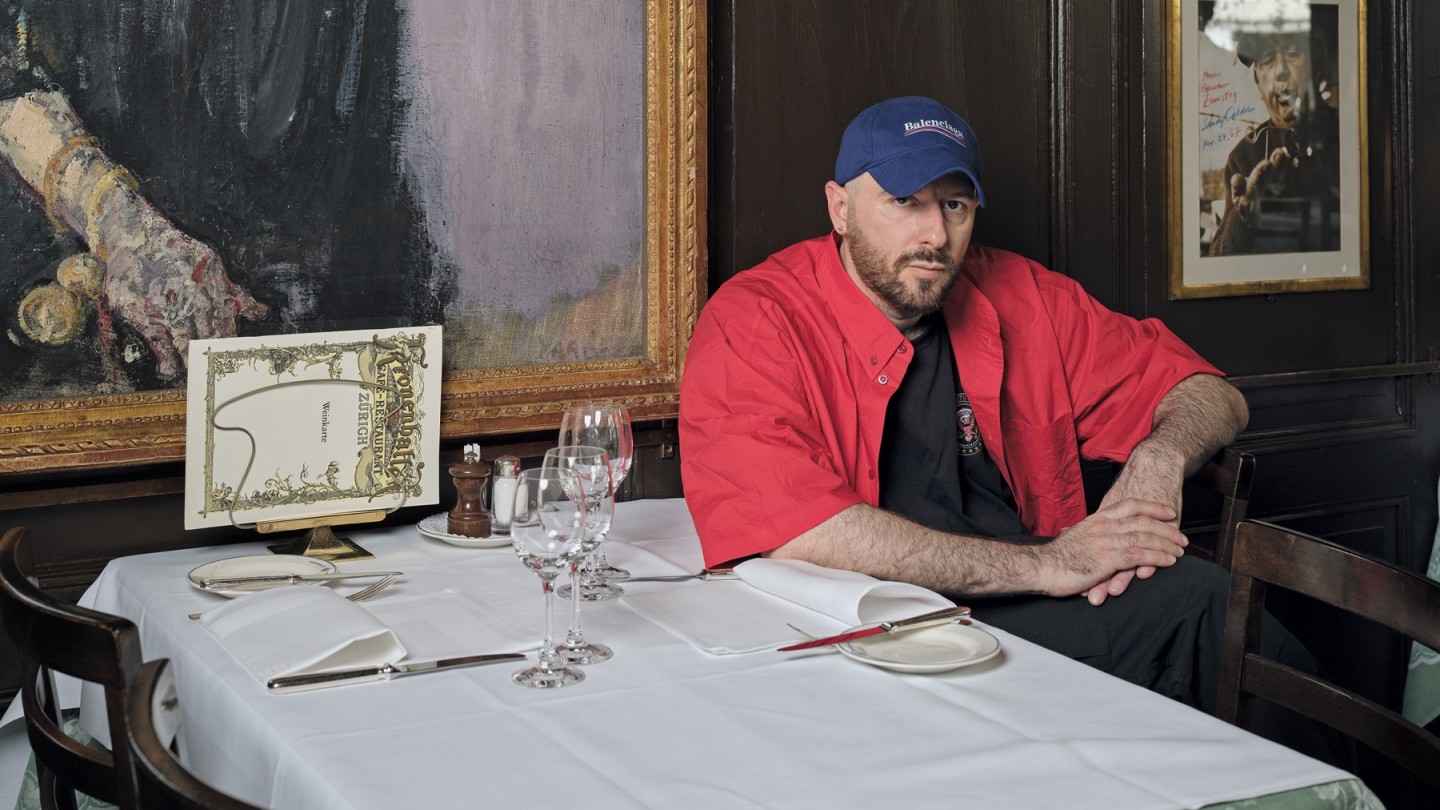
Simply sign up to the Fashion myFT Digest -- delivered directly to your inbox.
Zürich, Switzerland’s largest – albeit low-key – city, is many things. It hosts a thriving finance centre, fine coffee houses and a very efficient tram network. Its reputation as a centre of innovative fashion design, however, is something of a work in progress.
Nevertheless, in recent years the city has become the base of one of the industry’s most dynamic and controversial talents: Demna Gvasalia, the 38-year-old creative director of Balenciaga. The designer was appointed to the Kering-owned house in 2015. At the time, he was a relative outsider, best known to the industry as the founder of Vetements, the anarchic streetwear label he launched with his brother Guram in 2014. He moved to Zürich in 2017 and commutes to the studio in Paris. It’s an unusual arrangement, but it works. Already, Gvasalia has propelled the brand from being a small player within the luxury portfolio to the fastest-growing business in the Kering group. Revenues at the house are expected to exceed €1bn this year, and Balenciaga has been ranked one of the three hottest brands in The Lyst Index, compiled by the fashion search engine that tracks online consumer behaviour, every quarter for the past two years.
“Zürich is good because you’re far from that fashion frenzy, but it’s also close to anything you need,” says Gvasalia of life in the canton. He is sitting in one of the city’s most famous restaurants, the Kronenhalle, which has been serving schnitzel and snoot to politicians, writers and artists since 1924. The designer, with his close-cropped beard, black T-shirt and a cap pulled low over his eyes, cuts an unusual figure in this hub of quiet conservatism where, he says, “everyone wears beige”. But if the locals are alarmed by the brooding Georgian, they don’t mark it. “They’re too reserved, I think, to say anything,” he says of his neighbours. “And also, they don’t care.”
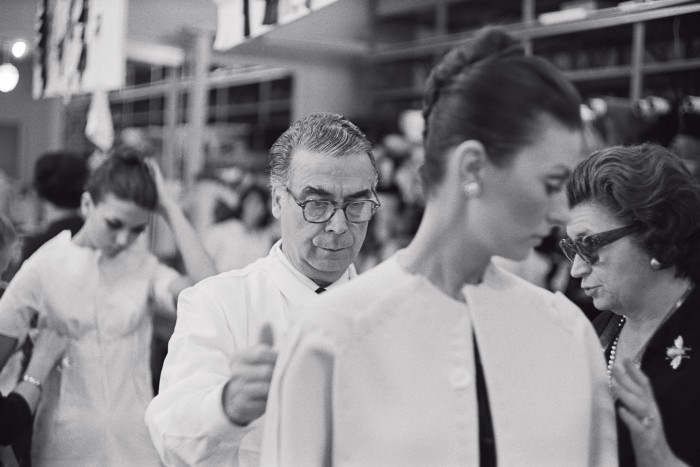
We are not in the Kronenhalle by accident. Immediately over our table hangs an imposing portrait of the restaurant’s founding proprietor Hulda Zumsteg by the Swiss artist Varlin. It was painted in 1967 and depicts the restaurateur in a black silk dress. The piece is of particular interest to Gvasalia, because the dress was made by Cristóbal Balenciaga. Hulda’s son Gustav, who worked in the silk industry, was a friend of the late couturier – and Hulda was a frequent patron.
To see Gvasalia sitting beneath the portrait makes for an interesting comparison: the grande dame and the fashion gangster. But it also tells another story. “When I first came to Balenciaga to speak with [Kering chairman and CEO] François-Henri Pinault, I told him about this documentary in which Cristóbal was featured.” He speaks quickly, with a thick east European accent, and punctuates with a goofy giggle that undercuts his sometimes gruff persona. “You could see him working on one of those personalised dummies of a client, an older woman,” he says, nodding towards the portrait. “I think that client was Hulda; it was a shorter woman who had what you might call a hunchback – and in this film, Cristóbal took the fabric and draped it in a way that made her straight. With this one gesture, he completely changed her posture and her whole attitude. It was a masterclass in design; I found it so magical. And I think that’s why I wanted to be at Balenciaga: to be able to do that with clothes and give that kind of confidence to someone is fantastic.”
In 2019, however, there are few opportunities to dress couture clients in silks. Hence, Gvasalia’s challenge has been to take the staples of the wardrobe and reconceive them with a couture attitude that might work for today. His very first look for the house was an “hourglass” blazer with a sculptural waist, which has since become a key silhouette in his collections. He has created technical parkas that look as extravagant and luxurious as opera coats, and opera coats worn as insouciantly as one might wear a bathrobe. His hybrid sneaker, the bestselling Triple S, melds together three different trainer soles.
This season he has delivered tailored jackets with softly peaked shoulders that coil around the seam, kimono-style robes, evening dresses in acid-coloured silks with strange suspended collars, and coats that cocoon the body in exaggerated folds. But alongside them he has designed bags that look like something you’d pick up at a grocery store, puffer coats and T-shirts.
“It’s as much about jeans and a T-shirt as it is an evening dress or a ballroom dress,” he says of his version of couture. “If you wear jeans with a fit that makes you look effortlessly good, and that you don’t have to think about when you put them on, that is a successful product. Those are the jeans I want to make – and a dress should have that purpose too.”
Under Gvasalia, Balenciaga has enjoyed massive growth, largely owing to millennials, the demographic that currently accounts for around 65 per cent of the brand’s customers. But appealing to a younger clientele has also made the brand a target of criticism from some quarters of the industry that are wary of a consumer more interested in sportswear than the craft of clothes.
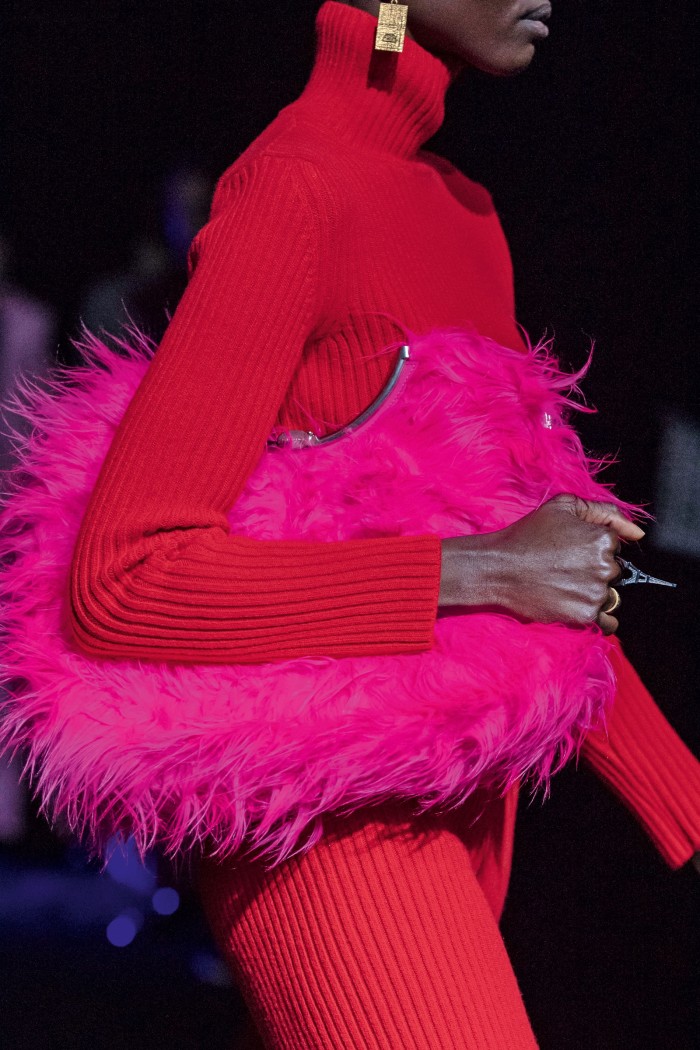
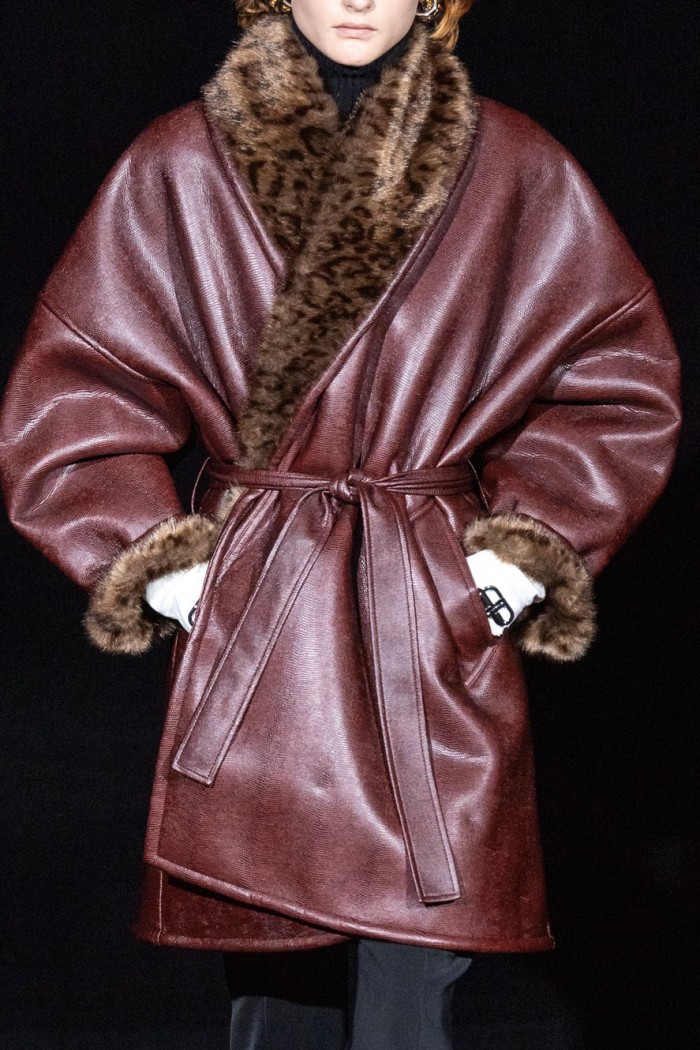
“I think that this decade has probably represented the most chaotic moment in fashion,” says Gvasalia of the tumultuous changes that have taken hold of the industry: the rise of e-commerce and social media, and the shifting global economy. “It’s been quite scary” he says. “But times have changed. The way we communicate with our customer today is a completely different story. I can’t say I have enjoyed it; for the past five years I’ve felt every day like I’m on the frontline.”
Despite the fact that he speaks six languages, and all fairly fluently, Gvasalia has been frequently misunderstood. “When I started at Balenciaga four years ago, I pressed the buttons that were a bit painful for fashion,” he explains of his sometimes controversial ideas. Such as the time, for example, that he reinterpreted Bernie Sanders’ 2016 Democratic nomination campaign logo and slapped it on his first menswear collection. Or his continued insistence on making luxury accessories designed to recall cheap souvenirs from a Paris tourist store. “I asked things like: ‘What is good? What is taste? What is style? What is bad taste? What is luxury? What is literal and not literal appropriation?’ I took this box and shook it up, because I needed that. And I had nothing to lose, to be honest, so I thought I might as well have fun doing it.”
But then came the backlash. “I’ve been a punchbag for so many people,” he admits. “Raising those questions was not easy. When you talk about a beautiful bow on the back of a dress there’s no issue: everybody loves bows in pretty colours. But they don’t like Crocs on a platform sole – and especially not in a house that is nearly 100 years old. I’ve studied Cristóbal’s creative heritage very carefully – more than people imagine, because it doesn’t literally translate in most of my work. But it’s not relevant today to just do the same thing in neoprene or in some kind of technical fabric. Mine is a more conceptual approach.”
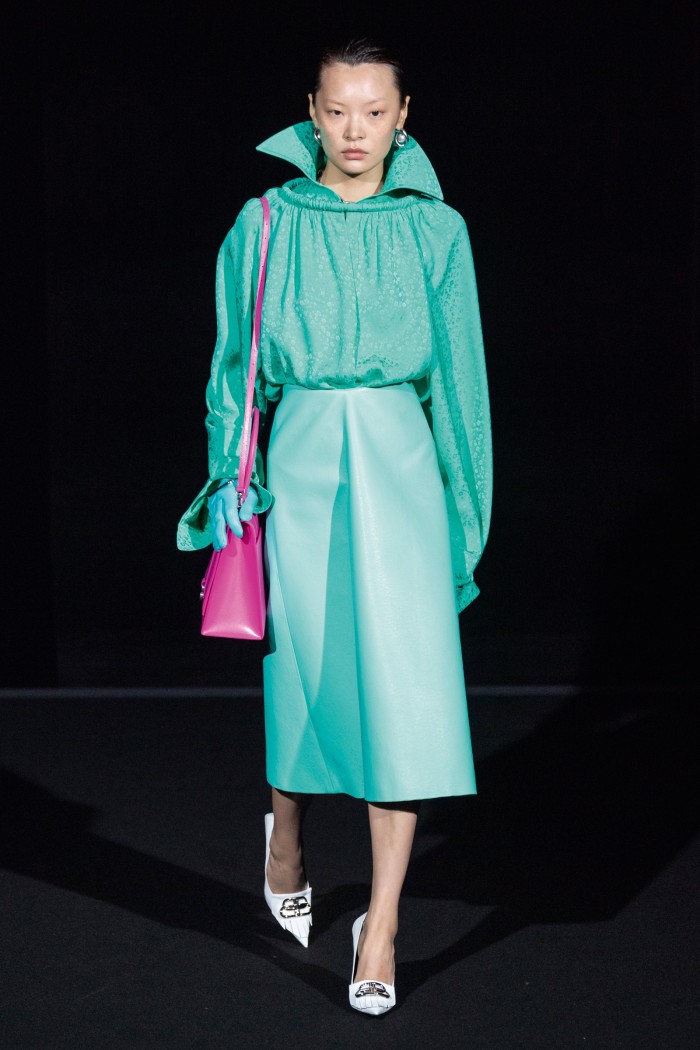
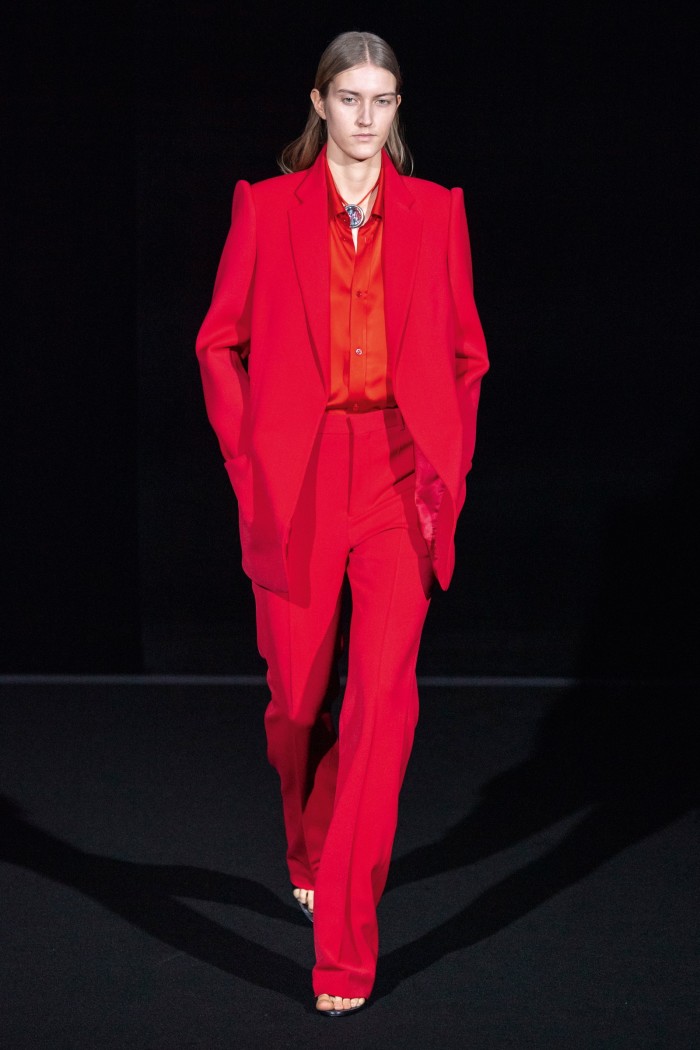
“Demna set a new vision for Balenciaga from the very beginning,” agrees Cédric Charbit, who became the brand’s CEO in 2016 and has been instrumental in driving growth. “The magnitude of his vision for all categories, and at every level, was different and forward‑thinking,” he says. “We became a platform for design, creativity and values where boundaries were pushed to define ‘new luxury’. And we built a community of talented people able to understand, embrace and execute the vision in a modern way.”
What is or is not relevant in fashion today is increasingly hard to pin down. For a time, Balenciaga seemed very focused on streetwear, with logo T-shirts and hoodies leading the way. But even while the autumn/winter show was literally set on a street, the fumes of freshly laid tarmacadam burning at the nostrils as it played out, Gvasalia’s last collection was relatively logo-free. It was more tailored. And grown up. There were no trainers.
Does he think consumer tastes are shifting? “The codes change all the time,” he says. “And I’m thankful for that, because it starts to feel scary when you keep liking the same thing all the time. But I think there are certain things people in their early 20s don’t want to wear.”
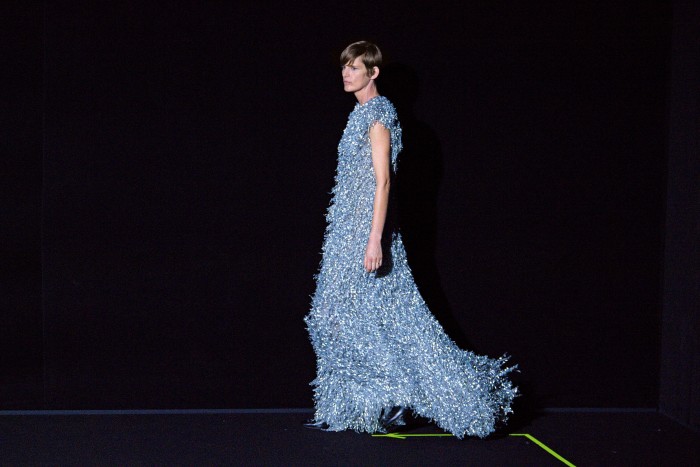
In a relatively conservative season, which drew heavily on a bourgeois sensibility and a rather retro ’70s femininity, I found it refreshing that the Balenciaga show was avowedly forward-looking. Yes, it had couture-inspired eveningwear, but it also featured water-bottle holders, business suits and raincoats: the stuff of modern life. “I try to channel people,” says Gvasalia of his attempt to read the consumer mood. “Like that horrible movie What Women Want, where Mel Gibson hears women’s thoughts and it gives him this magic power.”
Is Gvasalia blessed with powers to predict what people want? “No,” he laughs. “But I talk to a lot of people: those I work with, friends and the people around me. It’s very easy to get into fashion history,” he says of his contemporaries’ passion for nostalgia. “I love the ’80s and ’70s and ’60s, but I think it’s useless to just replicate history today, because we have a different society.”
Unquestionably, his reading of the zeitgeist has led to some powerful bestsellers. Katy Lubin, the vice president of communications at Lyst, calls him “the grand master of meme fashion”, saying she notes “huge spikes in page views for the more experimental Balenciaga pieces as they go viral”. And while he describes himself as an “Instagram voyeur”, Gvasalia has a rare gift for creating sticky, visual content that proliferates online: case in point, the multilayered looks he created for autumn/winter 2018 that recalled the episode of Friends in which Joey puts on all of Chandler’s clothes.
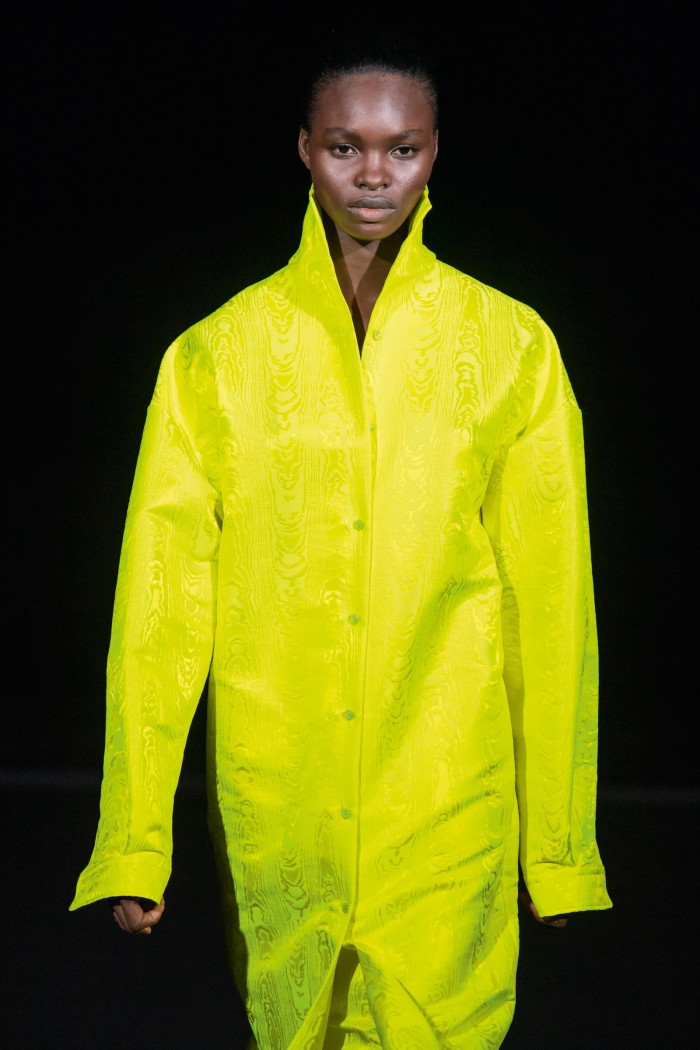
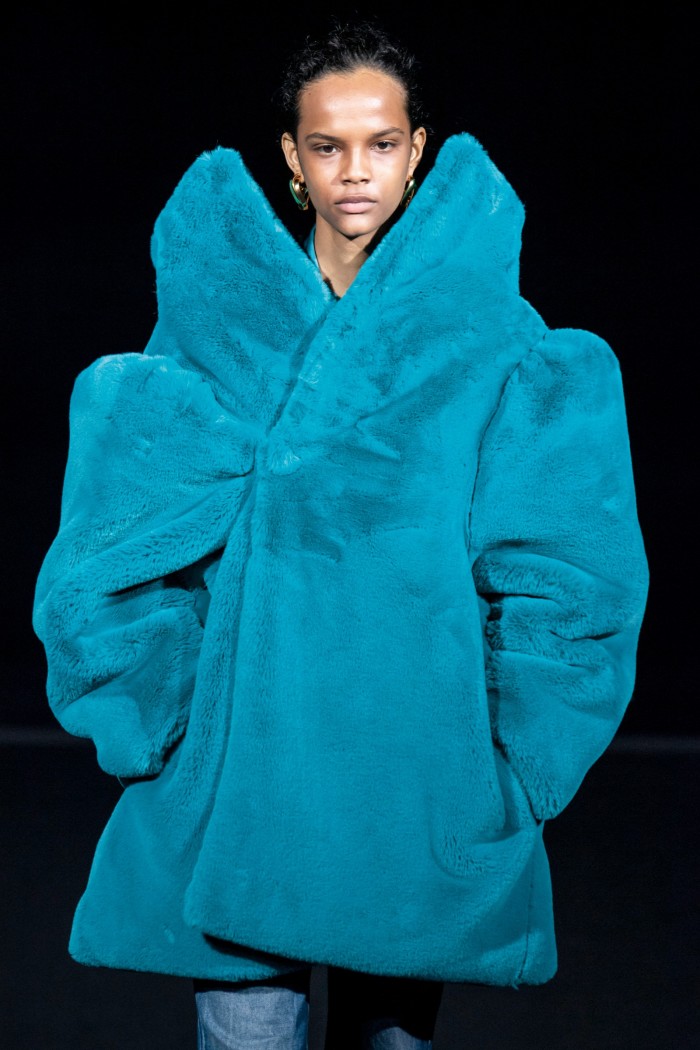
Does Gvasalia see himself as a creative leader? “I see myself, I would say, as a creative activist,” he demurs. “Leader is too much responsibility, and Balenciaga is still a small brand compared to others, so it’s difficult to have too much impact on the whole thing. But for me, Balenciaga has always historically been a leader in terms of creativity. Cristóbal’s work was always challenging: his pieces were quite unacceptable to the mainstream consumer. And Nicolas Ghesquière [who led the house from 1997-2012] was pretty much about the avant-garde in terms of materials and technology. So what we’re trying to do today is, I think, in line with that identity of the brand.”
Gvasalia has little time for merchandisers or moodboards. He reasons that when the market tells you that it wants something, it’s probably too late: “By the time that segment of the market understands a silhouette, it’s gone.” And he couldn’t care less about “likes”. “In the end, I try to communicate through clothes,” he says. “I don’t tweet, thank goodness, or do anything like that. I make clothes. For me, Instagram likes are as irrelevant as making a product and then doing a survey about what people think about it. For me, product design is about believing in something; it’s about feeling. And in the past my intuition has always brought me to the right places.” That said, Gvasalia does feel a very real obligation to honour Balenciaga’s legacy. “I’m very aware that I’m in somebody else’s house,” he says. “But I’m also aware that Kering took me for a reason. It’s not like I’m neutral, or Swiss.”
Life in Zürich has mellowed Gvasalia. It’s made him more resilient and distanced him from the Paris fashion bubble in which he was starting to feel overwhelmed. He lives 20 minutes outside the city with his husband, and not far from his brother. “I go to Paris anyway, once a month, for a week, so I get my dose of traffic jams and stress,” he says of the work/life balance. “But I think I needed this disconnection from fashion-ness to love it again. In Paris, I started to be very bitchy about fashion. And I couldn’t let that attitude eat up my pleasure for it any longer. Living in a village in Switzerland I love fashion more than ever.”
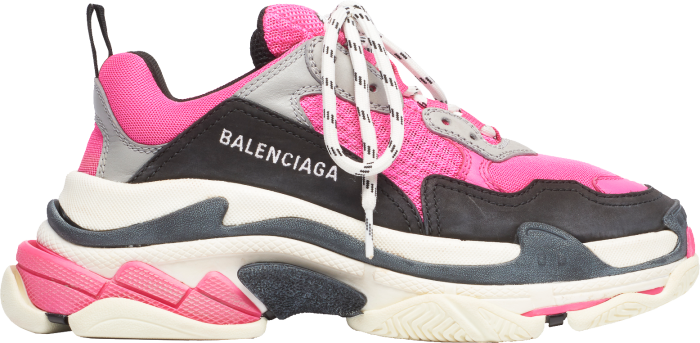
He also likes the Swiss pragmatism – but is he a pragmatic designer? “I love to be down to earth,” he says. “But I also love the idea of creating something that makes us dream about ourselves. When I’m wearing a certain type of clothing, I like to create a type of auxiliary identity. I realised recently that I’ve always struggled with identity myself.”
Born in Georgia, in 1981, to a Russian Orthodox Christian family, Gvasalia fled when he was 12, during the country’s violent civil war, and went to live in Germany. He studied fashion in Antwerp and worked for Martin Margiela before moving to Paris to launch Vetements with his brother, but he still retains the imprint of a Soviet-era childhood in which, he says, fashion was completely alien. “My relationship with fashion was not like the normal western boy’s. I didn’t have the magazines. Valentino was the only fashion brand that I had heard of. Soviet Russia was a vacuum.”
Yet traces of his past whisper all through his design. The big Herman Munster shoulder shape he loves, for example, recalls the Georgian Santa Claus, who wears a cape with vast shoulders that makes him look monumental and not the least bit jolly. And his love of oversized silhouettes speaks to the hand-me‑down culture in which he was raised. “My parents used to buy clothes two or three years in advance, so you could wear them in. Everything was oversized. And I wore lots of my cousins’ clothes because they were richer and had quality stuff.”
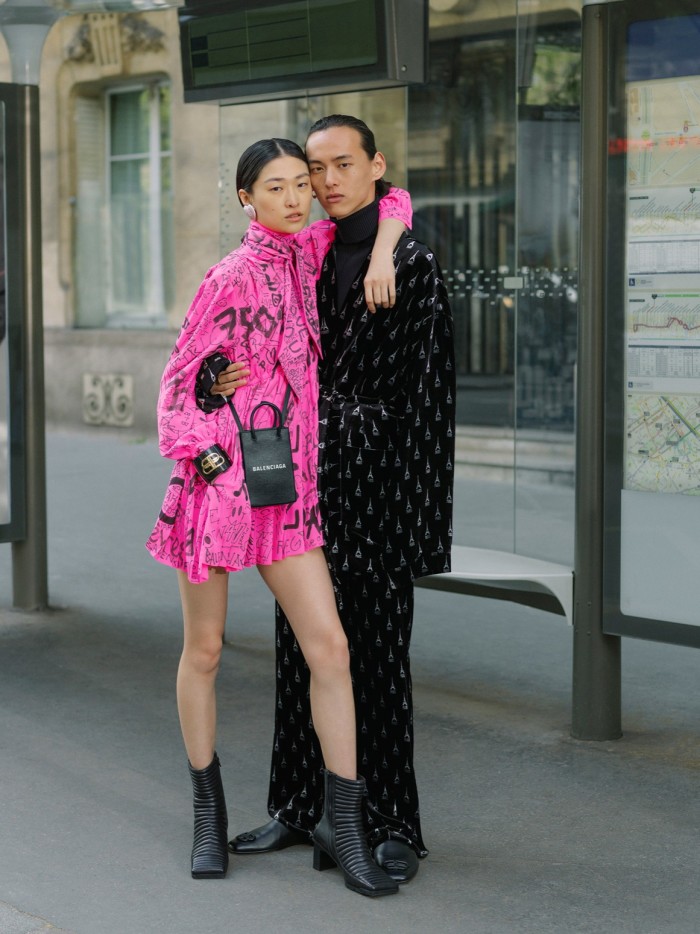
Living a pre-worn, homogenous wardrobe in a world where “literally everybody had the same chairs at home”, persuaded Gvasalia to get creative. “I wanted to make my own stuff,” he says. “I made pants shorter and I cut off part of my shirt collar when I was seven. I just wanted to be different. And I wanted this [difference] to be my identity.”
It’s one of the reasons why he thinks fashion is so important today. In the current landscape, where politics are so divisive and people are more tribal in their affiliations, brands have become a powerful shorthand for telegraphing various messages. “It’s a huge responsibility for brands,” agrees Gvasalia about the pressure to ally with different causes. “We cannot ignore politics. The younger generation is very informed and politicised. And I think it’s time for activism and for people to stand up.”
Sure enough, recent Balenciaga shows have seen the brand donating money to the United Nations World Food Programme. But if Balenciaga has a message, says Gvasalia, “it’s pretty much related to the F-word: fashion. Because that is what it’s all about for me and it has always been. It’s about the body of a person and what we give to this person as a garment to complement the way they feel and the way they express themselves.”
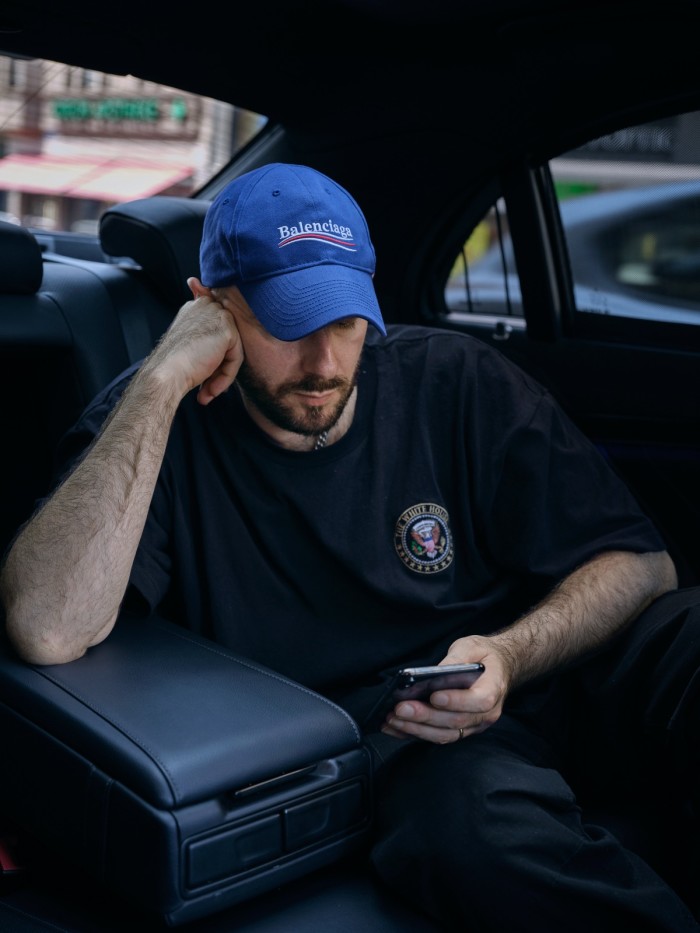
Would he be devastated if Donald Trump wore one of his suits? “Well, the thing is that as a brand we absolutely cannot control who would wear what,” he says. “So of course, my personal political views would not let me be happy about that. But then again, I would still wonder why.”
I wonder also if he still thinks of the handbag as the bedrock of the modern luxury house. “There have been a lot of discussions around this issue,” he says. “But I personally don’t believe in one type of product being the pillar of any kind of business in luxury any more. Unless it’s a heritage brand.
“Balenciaga is a house that makes clothes first and foremost,” he continues. “But I cannot ignore the things people want to buy. I can show a collection full of eveningwear, but it would be hypocritical because that’s not what people buy; that’s not what they have money for. They want to buy sneakers and they want to buy T-shirts. This is not something anybody can change, but I also don’t think a branded T-shirt is any kind of offence to luxury. The hardest thing to achieve in a modern, evolving brand is finding the right balance between the business and the dignity of the brand.”
Many would argue that Gvasalia has already trespassed on the dignity of the brand with his triple-soled sneakers and all those logos, but he doesn’t see it like that. “You can easily make products that make a lot of money in the short term by printing things on them. And back when I started doing that, of course, it got a lot of criticism. But this is exactly what people wanted. And they still buy it. It doesn’t mean they’ll want to buy it forever. As I said, I shook this box a bit, but I don’t think this is a problem. It’s a step in the evolution. It’s necessary. But I will keep on doing T-shirts and sneakers together with ballroom dresses as long as I do fashion. Because I don’t think it’s honest not to.”
For a designer who has always thought of things in terms of stories and two-year-plans, what comes next? “We’ve been working for a year on a new sneaker; I cannot wait for it to be out,” says Gvasalia. “But I’m also working on how to make quite eccentric eveningwear wearable, and the challenges of volume and things. We gave ourselves the liberty of working on different silhouettes – I don’t believe in one silhouette for one season – and so we’re going to do different stuff with volume, from sneakers to jeans to ballroom dresses. I want to make a ballgown wearable.”
Perhaps it’s typical of the creative mind that the last time we met, two years ago, Gvasalia told me couture was no longer about ballgowns. “Who needs a crinoline?” he asked. “You need a phone charger.”
“Exactly!” he giggles. “That’s exactly my challenge. To make a crinoline relevant. To get volume. That’s why it’s fun to do Balenciaga.”
Comments